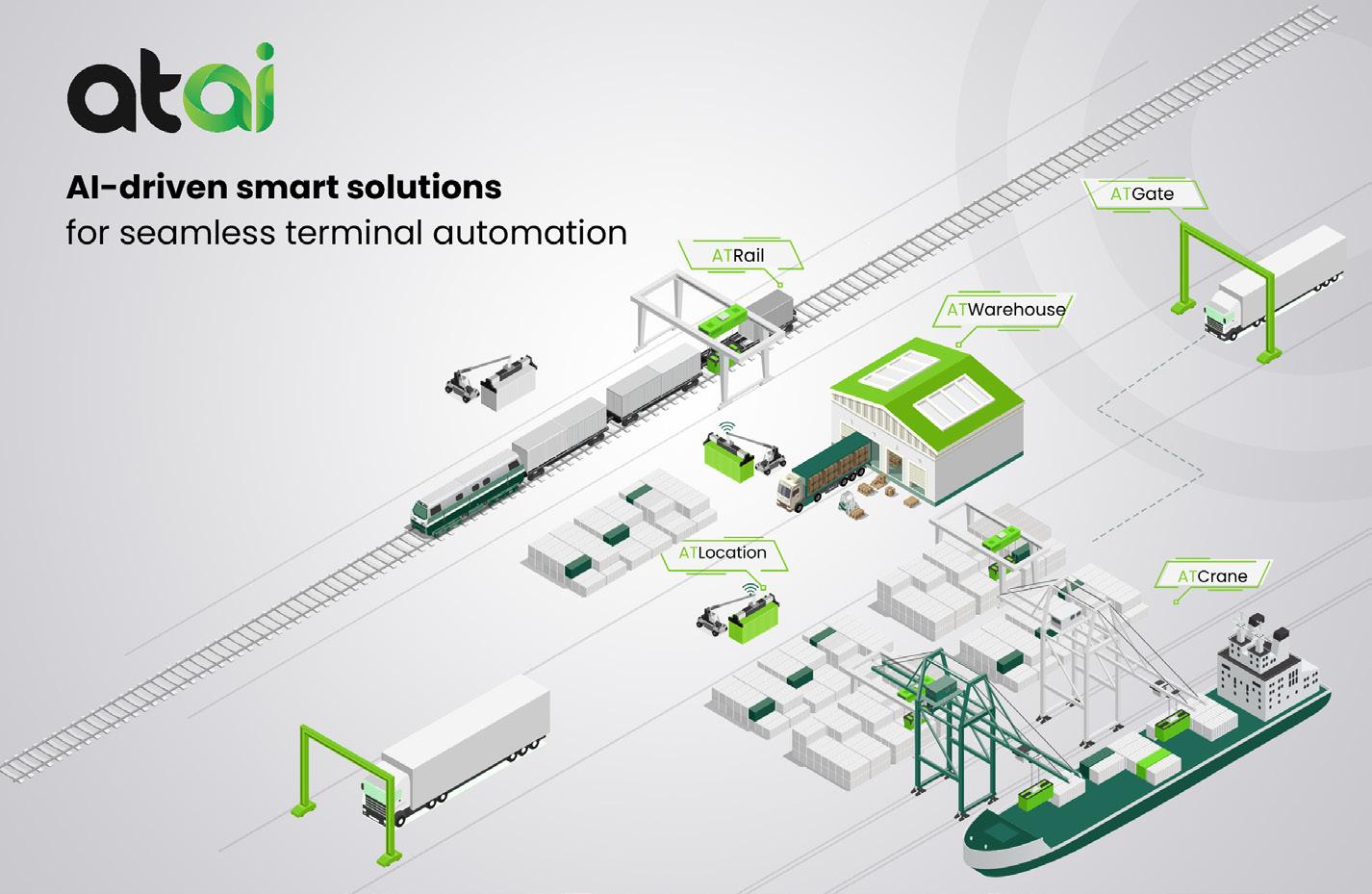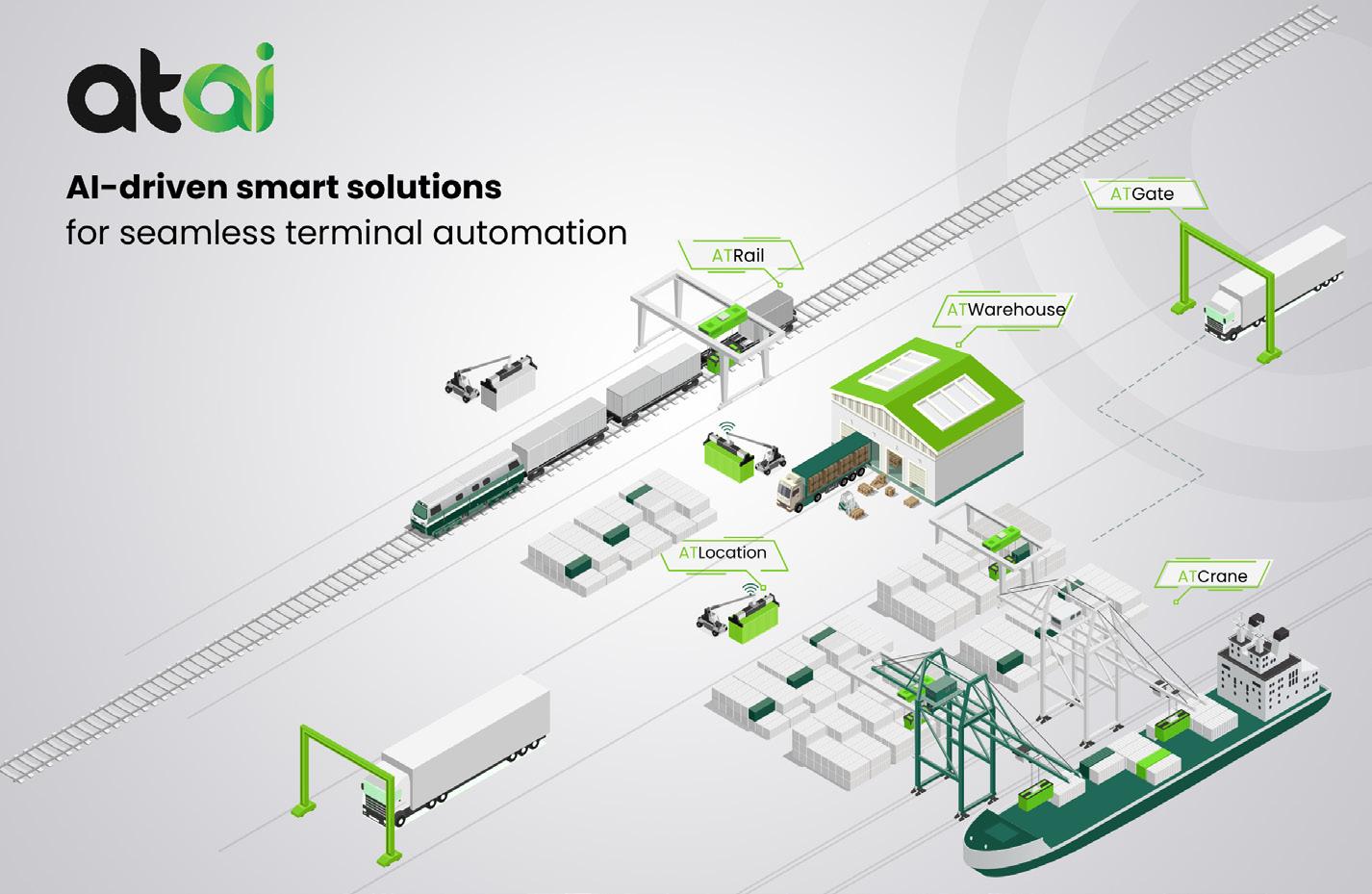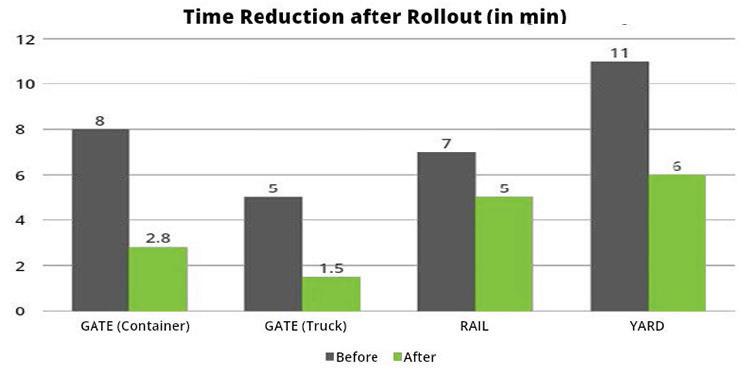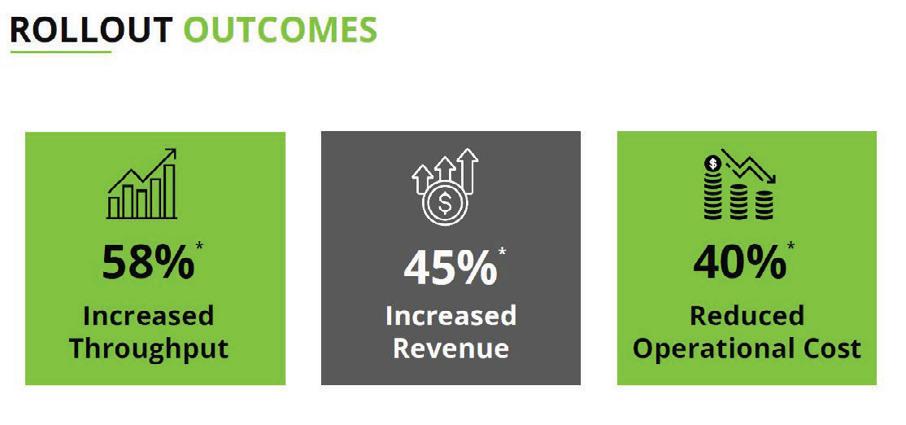
7 minute read
Seeking (a revolutionary) change. AI-powered solutions for present & future challenges in logistics
by Satish Gutta, Director, ATAI
Ports have long served as the arteries of global commerce, facilitating the seamless transit of over 80% of goods worldwide. As international trade burgeons in complexity, the necessity for dynamic, high-performance logistics systems capable of handling escalating cargo volumes has never been more critical. At the core of this evolution lies containerized cargo operations, a cornerstone of port logistics that demands precision, speed, and scalability.
In today’s evolving logistics landscape, ports are critical to ensuring the seamless flow of goods. By integrating advanced technologies into existing brownfield operations, they are driving significant improvements in efficiency, throughput, and process optimization. These incremental advancements enhance visibility and accountability, enabling ports to adapt to the growing demands of global trade in an increasingly competitive environment.
The Inland Container Depot (ICD) stands as a cornerstone of India’s trade and logistics network. As the country’s largest dry port and a flagship facility in the region, it serves as a crucial multimodal link, connecting the extensive hinterlands of Northern and Western India to key gateway ports. However, operating a terminal of this scale requires more than just robust infrastructure; it demands the integration of advanced technological solutions to achieve operational excellence and efficiency.
This is where ATAI has redefined operational paradigms. Leveraging its pioneering suite of applied AI solutions, our company has transformed ICD into a model of efficiency, reducing dwell times, enhancing safety, and addressing operational inefficiencies that once impeded its potential.
Operations before automation
The day at the terminal commenced with vehicles lining up at the gates, where drivers navigated a series of formalities that often proved time-intensive. Each driver was required to disembark repeatedly to fulfill approval procedures with a surveyor, an officer of the Central Industrial Security Force, and, in certain cases, a customs official. For vehicles carrying loaded containers, customs inspections involved verifying seals and documentation, adding further complexity. This process, while routine, was inherently protracted and often led to queues that disrupted the smooth flow of operations.
Once admitted, a vehicle’s path depended on its purpose. Containers depending on the need were either kept in the yard or proceeded to the warehouse for the stuffing or de-stuffing process. However, the warehouse presented its own set of challenges. Space allocation was largely unstructured, with vendors utilizing areas as required without precise oversight. This lack of systematic monitoring often resulted in goods exceeding designated boundaries, leading to inefficiencies in space utilization and potential revenue losses. The yard posed an additional challenge. Identifying the exact location of containers relied heavily on basic documentation, requiring equipment operators to manually search through rows of containers.
This lack of precision extended operational timelines, placed an undue strain on heavy machinery, and introduced redundancies into the workflow. The rail yard, however, represented the most critical intersection of risk and inefficiency. The coexistence of heavy machinery and human intervention created a high-stakes environment where precision was paramount. Loading and unloading containers onto wagons required meticulous coordination, yet the process relied on manual assignments that were susceptible to delays and errors. The proximity of personnel to large equipment further amplified safety concerns, heightening the risk of severe incidents.
Across all facets of the operation – gates, warehouses, yards, and rail – the reliance on manual workflows limited efficiency and increased vulnerability to errors. Tracking container movements, ensuring transparency, and maintaining safety standards were persistently challenging, often giving rise to disputes over damages or mismanaged cargo. This fragmented and labor-intensive system consumed valuable time and resources, leaving little room for optimization. Without integrated real-time data systems, operations often felt cumbersome and uncoordinated, limiting the terminal’s ability to achieve optimal performance.
Operations after ATAI
The transformation of operations at the ICD stands as a testament to the power of digitalization driven by artificial intelligence (AI). From the moment a container enters the terminal to its departure (ingress to egress points) via rail, ATAI’s innovative suite of solutions – ATGate, ATRail, ATYard, and ATWarehouse –have streamlined every stage of the process, delivering unprecedented levels of efficiency, transparency, and safety.

ATAI’s automated gate solutions, ATGate, have transformed the way vehicles enter and exit the terminal. Upon arrival, each vehicle passes through an automated boom barrier, ensuring a controlled and efficient flow. Video cameras and sensors then capture critical details, like container number, ISO code, license plate number, seals count, container damage status, and other important attributes. This automation ensures a swift, hassle-free process, eliminating the need for manual checks and reducing congestion at the gates. Additionally, the visual evidence and data captured at this stage provide a reliable reference for resolving disputes, increasing transparency and accountability across the board. Once inside, ATWarehouse transforms how goods are managed. Using advanced AI-driven systems, storage areas are allocated precisely, and any overuse of space by vendors is detected in real-time. This ensures fair billing and optimal utilization of warehouse capacity, eliminating the inefficiencies of manual monitoring. The solution also enables seamless cargo tracking, with real-time insights into dwell times and storage conditions. This precision has reduced warehouse operational time by 55%, improved transparency, and fostered smoother interactions between vendors and terminal operators.

ATYard brings intelligence to container movements. The solution leverages global navigation satellite system-enabled sensors and AI algorithms to track containers in real-time, eliminating the guesswork in locating specific units. Every container is assigned an optimal position, reducing unnecessary movements and saving valuable time. Another key feature of ATYard is its automated First In, First Out system. Traditionally, containers stacked on top were removed first for convenience, often delaying those that arrived earlier. ATYard ensures that containers are handled in the exact order they arrive, providing fairness to customers while maintaining operational efficiency. These improvements have optimized job assignments for heavy equipment, such as cranes and stackers, minimizing delays and ensuring smoother workflows across the yard.
At the rail side, ATRail has revolutionized container loading and unloading. By automating wagon & container mapping, the solution ensures that boxes are accurately assigned to their designated wagons. Cameras at the rail portal capture the details of the wagons and containers, providing end-to-end visibility. The system’s intelligent job assignment capabilities have achieved a 40% reduction in rail turnaround times, enabling faster processing and lowering operational costs. Additionally, safety has improved markedly, as ATRail minimizes human interaction in high-risk areas, significantly reducing the potential for accidents.
The rollout of ATAI’s solutions at ICD has delivered outstanding results: 1.6x improvement in terminal throughput; 45% boost in revenue; 40% reduction in operational costs; and 60% reduction in emissions. ATAI’s solutions have not only optimized the terminal’s capacity but also aligned the its operations with global sustainability goals.

A proven path to success
The transformation of ICD through ATAI’s AI-driven solutions is a testament to the immense potential of technology in revolutionizing logistics. From seamless gate operations to efficient yard and warehouse management, ATAI has tackled long-standing inefficiencies, enhanced safety, and elevated transparency across every touchpoint of terminal operations.
ATAI’s vision goes beyond solving today’s challenges: it’s about creating smarter, more connected systems that align with the future needs of global trade. As the logistics industry continues to evolve, our company remains steadfast in its commitment to innovation, ensuring its customers lead the way in efficiency, reliability, and sustainability.
For organizations seeking to transform their operations and embrace cutting-edge technology, ATAI provides a proven path to success – one driven by intelligence, rooted in technology, and focused on delivering measurable results.
ATAI is an applied AI company driving digital transformation in the maritime, logistics, and supply chain industries. Focused on improvements in productivity, sustainability, and cost efficiency, ATAI offers end-to-end problem-solving solutions powered by AI algorithms and cutting-edge technologies. Head to atai.ai to learn more.








